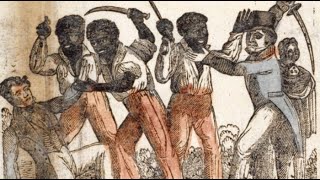
Jemmy was an enslaved worker in 1739 colonial South Carolina. As best as we know, he was born in the Kingdom of Kongo, or what is now called Angola. Influenced by Portugal traders, Kongo’s royalty spread the Portuguese language among its peoples. In the 1400s, it adopted Catholicism and had an independent relationship with the Vatican. Kongo was a developing feudal order with many skilled workers, artisans, and a warrior caste. It also had a class of slaves and engaged in the slave trade. Plantation owners around Charleston preferred slaves from ‘Angola’, since they were adept at growing rice and had other skills as well.
Jemmy was a Catholic, spoke Portuguese, and was reportedly literate and a skilled fighter. He worked on a plantation near the Stono River, 150 miles from the colony’s southern border. Across that line was the new colony of Georgia, designed for British prisoners, where slavery was illegal at the time. Another 100 miles or so to the south was the border of Spain’s ‘La Florida.’ It was considered a backwater without gold or silver, but still considered an extension of Cuba. Florida was where beef cattle were raised and exported to Havana. Saint Augustine was the major fortress town near the Georgia border.
Of interest to Jemmy and a few other Portuguese-speaking slaves he knew near Stono, was that Spanish then held a different policy on slavery than the British. If you converted to Catholicism and agreed to join the militia in Florida, you would be emancipated and no longer be a slave. The appeal was natural.
‘La Florida’ had been a haven for escaped slaves and retreating Native Peoples for several decades. The Spanish encouraged them not only to fend off the British but to strengthen their hold on the indigenous peoples it held in debt peonage on several ‘mission’ plantations. It even gave Africans their own settlement, Fort Mose (pronounced Mo-SAY). It served as a small autonomous zone and end terminal for an early ‘underground railroad’ running to the south.
We don’t know if Jemmy and his comrades were specifically familiar with Mose, only the attraction of getting to Spanish territory. The fall of 1739, when their masters were still recovering from bouts of malaria, seemed a good time for a radical rupture. So on Sept 9, his initial team of 20 or so rebelled, killed their masters, set the plantations aflame, and headed south. Their size grew as they marched, growing to around 100. They carried a banner that proclaimed ‘Liberty!’ They burned six plantations and killed about 30 whites in all before they were stopped. According to Wikipedia:
“While on horseback, South Carolina’s Lieutenant Governor William Bull and five of his friends came across the group; they quickly went off to warn other slaveholders. Rallying a militia of planters and minor slaveholders, the colonists traveled to confront Jemmy and his followers. The next day, the well-armed and mounted militia, numbering 19–99 men, caught up with the group of 76 slaves at the Edisto River. In the ensuing confrontation, 23 whites and 47 slaves were killed. While the slaves lost, they killed proportionately more whites than was the case in later rebellions. The colonists mounted the severed heads of the rebels on stakes along major roadways to serve as a warning for other slaves who might consider revolt.”
Jemmy was also named ‘Cato’ by his master, and thus the Stono Revolt was sometimes called ‘Cato’s Rebellion.’ There were many more before it, but it was the largest in this period. The enslavers immediately enacted harsher rules—the enslaved were forbidden to learn to read, write, or gather among themselves.
It also changed some other practices. Those buying slaves more often sought them from the Caribbean, where they were supposedly ‘seasoned’ first. Or better yet, they were homegrown slaves who had never known other conditions in life, even those in the Kingdom of Kongo. In the end, Jemmy’s descendants would come to rule for six years or so in South Carolina during Reconstruction. But that’s far ahead in our stories. More to come.